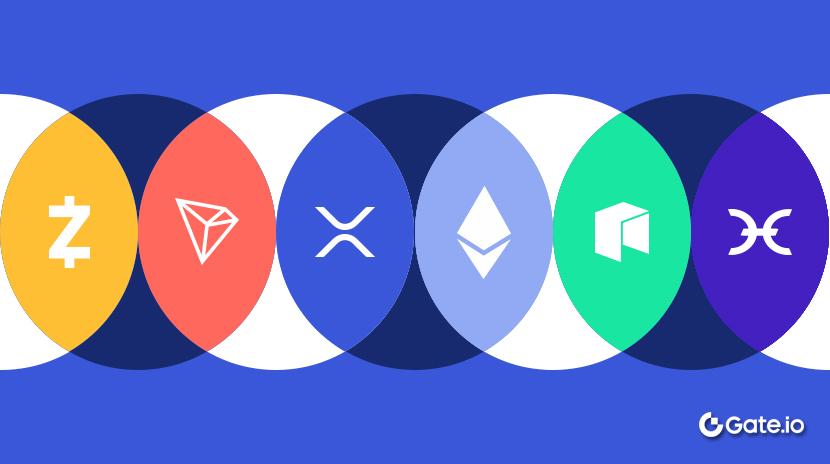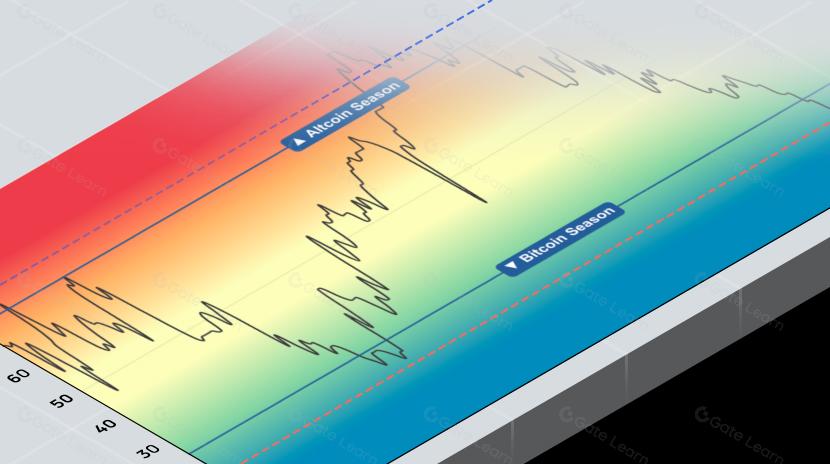What is Haedal Protocol (HAEDAL)?
A liquid staking protocol on Sui combining validator automation, DeFi integration, and token-based governance through haSUI, haWAL, and veHAEDAL.

Introduction
Haedal Protocol is a liquid staking infrastructure designed specifically for the Sui blockchain. It addresses the limitations of traditional staking by allowing users to earn rewards without locking their assets. Through a system of derivative tokens—haSUI for SUI and haWAL for WAL—users maintain liquidity and access to decentralized finance applications while their tokens remain staked. The protocol automates validator selection and reward distribution, integrates with DeFi platforms across Sui, and introduces a governance model that connects long-term commitment with decision-making power.
What is Haedal Protocol (HAEDAL)?

Haedal Protocol is a liquid staking infrastructure developed on the Sui blockchain. It allows users to delegate their SUI tokens to validators and receive liquid staking tokens called haSUI in return. These haSUI tokens represent a user’s staked position and increase in value over time as staking rewards accrue. Users retain the ability to interact with decentralized applications while still earning staking rewards on their underlying assets.
The protocol abstracts away the technical process of validator selection and stake delegation. When a user stakes SUI through Haedal, the protocol automatically delegates the tokens across a dynamically managed set of validators. This allocation is optimized based on validator performance, commission, and reliability. The rebasing process updates the haSUI token value based on total rewards generated, without requiring users to claim or restake. haSUI acts as a receipt token, and its balance does not change, but its value increases based on staking yield.
Haedal also supports staking of WAL tokens through a similar mechanism. Users can stake WAL and receive haWAL, a liquid token that tracks the performance of the staked WAL and allows for continued participation in DeFi. Both haSUI and haWAL can be used as collateral or liquidity in other DeFi protocols, depending on integrations. This structure is intended to avoid capital inefficiency that comes from locking assets solely for validator staking.
History, Team, Investors of Haedal Protocol
Haedal Protocol was established in 2023 with a focus on creating liquid staking infrastructure specifically for the Sui blockchain. The project began development prior to the public launch of Sui mainnet and positioned itself to provide a solution tailored to the network’s validator and staking architecture. Haedal’s design process considered the unique characteristics of the Sui consensus mechanism, including its epoch-based validator cycles, object-centric programming model, and transaction parallelization. This alignment allowed the protocol to integrate staking with composable DeFi functions from the early stages of the Sui ecosystem.
The protocol’s first public documentation and developer materials were published through its Gitbook and official Medium blog in late 2023, outlining its liquid staking model, validator optimization logic, and staking token mechanisms. By early 2024, Haedal launched on the Sui mainnet and began onboarding users through its web application. The protocol gained initial traction through community campaigns and integrations with early Sui DeFi protocols. These integrations supported haSUI’s use in liquidity pools and vaults, building out a staking-based liquidity layer within the Sui network.
Luke Shi is listed as a co-founder of Haedal Protocol. His background includes experience in Web3 infrastructure, staking models, and DeFi integrations. Public information about the rest of the founding or engineering team is limited. The project communicates primarily through its official website and social channels but does not publish a detailed team roster. The development and release cycle has demonstrated experience in protocol design, validator coordination, and smart contract deployment within Sui’s Move-based environment.

In January 2025, Haedal announced the completion of its seed investment round. The funding included participation from several strategic investors, covering both venture firms and ecosystem partners. Notable participants include Hashed, OKX Ventures, Animoca Ventures, Flow Traders, Cetus, Scallop, Comma3 Ventures, Dewhales Capital, and the Sui Foundation. These backers represent a mix of early-stage Web3 investors, liquidity providers, and development teams involved in the broader Sui network.
Each of these investors contributed based on distinct strategic relationships. Hashed and OKX Ventures are involved in infrastructure and early-stage protocol development. Animoca Ventures has a history of supporting staking and gaming projects. Cetus and Scallop are existing DeFi platforms on Sui that integrate haSUI and haWAL within their products. Flow Traders operates as a market maker, providing secondary liquidity support. The Sui Foundation provides grants and strategic alignment for projects building within the ecosystem.
Haedal Protocol’s Main Features

Haedal Launch APP

The Haedal Launch App serves as the primary interface for users to interact with the protocol. Through this application, users can stake SUI tokens and manage their haSUI holdings. The app provides options for both automated staking, where the protocol selects validators, and manual staking, allowing users to select preferred validators. It also displays information on staking balances, validator performance, and staking rewards.
Users can initiate unstaking requests through the app, subject to the lock period defined by the Sui protocol. The unstaking process burns haSUI and queues the user’s request for withdrawal of underlying SUI at the next available epoch cycle.
Stake

Haedal Protocol’s staking system allows users to stake SUI tokens and receive haSUI tokens in return. These haSUI tokens represent the staked assets and accrue staking rewards over time. The protocol also supports staking for WAL tokens, issuing haWAL tokens to represent the staked WAL assets. This system enables users to maintain liquidity while earning staking rewards.
Users can initiate unstaking requests through the app, subject to the lock period defined by the Sui protocol. The unstaking process burns haSUI and queues the user’s request for withdrawal of underlying SUI at the next available epoch cycle.
Defi

Haedal Protocol integrates with various DeFi platforms within the Sui ecosystem, such as Cetus, Scallop, and Turbos Finance. These integrations allow haSUI and haWAL token holders to participate in various DeFi activities, including liquidity provision, lending, and yield farming. Users can supply haSUI to lending protocols or provide liquidity in haSUI/SUI pairs on decentralized exchanges.
Users can initiate unstaking requests through the app, subject to the lock period defined by the Sui protocol. The unstaking process burns haSUI and queues the user’s request for withdrawal of underlying SUI at the next available epoch cycle.
haeVault

HaeVault is a gamified staking product developed by Haedal Protocol. It allows users to deposit SUI into a vault for a chance to win random rewards. The more SUI deposited, the higher the chances of winning. Users may withdraw at any time before the game starts, with a 1% fee applied to early withdrawals.
Users can initiate unstaking requests through the app, subject to the lock period defined by the Sui protocol. The unstaking process burns haSUI and queues the user’s request for withdrawal of underlying SUI at the next available epoch cycle.
veHAEDAL

veHAEDAL is the vote-escrowed form of the HAEDAL governance token. Users can lock HAEDAL tokens to obtain veHAEDAL, which grants them voting rights in protocol decisions and a share of the protocol’s revenue. The longer the lock duration, the more veHAEDAL a user receives.
The protocol allocates 50% of its revenue from staking fees, HaeVault profits, and other sources to buy back HAEDAL tokens from the market, distributing them to veHAEDAL holders. This structure ties governance participation directly to protocol income. Users can participate in protocol governance by voting on proposals using their veHAEDAL tokens.
Haedal Protocol’s Stats on TVL and Users (2025)

As of May 2025, Haedal Protocol reports a total value locked (TVL) of over $200 million, with more than 850,000 participating accounts. The exchange rate for haSUI is approximately 1.055, reflecting the accrued staking rewards. The protocol has distributed over $3 million in rewards to users through haSUI.
The protocol’s design includes a validator management strategy that continuously reallocates staked assets to higher-performing validators based on on-chain metrics. Validators with poor performance or slashing events are removed from the allocation list. Haedal implements this through automated smart contracts that follow validator metrics published by the Sui network. These contracts handle delegation, undelegation, rebasing, and rebalancing, ensuring that users do not need to manually intervene.
Users can initiate unstaking requests through the app, subject to the lock period defined by the Sui protocol. The unstaking process burns haSUI and queues the user’s request for withdrawal of underlying SUI at the next available epoch cycle.
Haedal Protocol’s Technical Architecture
Haedal Protocol is a liquid staking infrastructure developed on the Sui blockchain. It allows users to stake SUI tokens and receive haSUI tokens in return, which represent the staked assets and accrue staking rewards. These haSUI tokens can be used within various decentralized finance (DeFi) applications on the Sui network. The protocol also supports staking for WAL tokens, issuing haWAL tokens to represent the staked WAL assets.
The protocol offers a user interface accessible through its web application, enabling users to stake SUI tokens and manage their haSUI holdings. Users can choose between automated staking, where the protocol selects validators, and manual staking, allowing users to select preferred validators. The interface provides information on staking balances, validator performance, and staking rewards.
Haedal integrates with DeFi platforms within the Sui ecosystem, such as Cetus, Scallop, and Turbos Finance. These integrations allow haSUI and haWAL token holders to participate in various DeFi activities, including liquidity provision, lending, and yield farming. Users can supply haSUI to lending protocols or provide liquidity in haSUI/SUI pairs on decentralized exchanges.
The protocol includes HaeVault, a gamified staking product where users can deposit SUI into a vault for a chance to win random rewards. The more SUI deposited, the higher the chances of winning. Users may withdraw at any time before the game starts, with a 1% fee applied to early withdrawals.
What is the (HAEDAL) Token?
HAEDAL Token Utility
The HAEDAL token functions as the governance and utility asset of the Haedal Protocol. It is used to align the incentives of protocol participants, distribute rewards, and facilitate decentralized governance. HAEDAL holders can lock their tokens to obtain veHAEDAL, which is required to participate in on-chain voting and receive a share of protocol-generated rewards. This structure creates a mechanism through which active contributors influence decision-making while maintaining a long-term interest in the protocol’s growth and operation.
HAEDAL Supply and Allocation

The total supply of HAEDAL is capped at 1,000,000,000 tokens. The distribution is structured across four primary categories:
- Ecosystem Incentives (55%): Allocated to reward users of the staking protocol and its DeFi integrations. This pool supports adoption, partnerships, liquidity incentives, and general protocol usage growth.
- Team and Advisors (20%): Reserved for protocol developers and advisors, subject to long-term vesting. This allocation ensures long-term alignment between contributors and the protocol.
- Investors (15%): Designated for early backers, subject to lock and vesting. This portion supported the seed funding round completed in January 2025.
- Liquidity Fund (10%): Allocated to support initial and ongoing token liquidity on centralized and decentralized exchanges. This includes market-making activities and strategic liquidity provisioning.
HAEDAL Vesting Schedu

Investor tokens are locked for an initial period of 6 months after token generation. Following this lock-up, the tokens vest linearly over 12 months. This structure is intended to mitigate short-term speculation by early backers and reduce pressure from concentrated selloffs. It ensures investor alignment during the first operational year of the protocol after launch.
The team and advisor allocation is locked for a longer period. Tokens allocated to internal contributors remain locked for 12 months and are then released gradually over 24 months through linear vesting. This timeline supports continued protocol development and participation by the founding contributors and ensures that internal stakeholders remain active during the early expansion phase.
HAEDAL’s Economic Design
The HAEDAL token integrates staking, governance, and revenue distribution into a single economic system. Users who convert HAEDAL into veHAEDAL obtain voting rights and qualify for protocol reward distributions. Half of all protocol revenue—generated from validator commission, vault performance, and other on-chain services—is used to buy HAEDAL tokens from the open market. These tokens are then distributed to veHAEDAL holders based on the weight of their locked positions.
This mechanism ties protocol usage directly to token demand and provides a recurring incentive for HAEDAL holders to participate in governance and staking. It creates a structure where protocol revenue flows back into token utility. The longer users lock their HAEDAL, the greater their proportional share of these rewards. The decaying nature of veHAEDAL balances voting power across time, requiring continuous participation to maintain influence.
Haedal Protocol Governance
Haedal Protocol’s governance system is structured around the veHAEDAL mechanism, which integrates staking, voting, and reward distribution. Users lock HAEDAL tokens for durations ranging from 1 to 52 weeks, receiving veHAEDAL tokens in return. The amount of veHAEDAL received is proportional to the lock-up period, with a maximum of 1 veHAEDAL per HAEDAL token for a 52-week lock. These veHAEDAL tokens decay linearly over the lock-up period, reaching zero at the end, at which point users can retrieve their original HAEDAL tokens.
veHAEDAL tokens grant users the ability to participate in governance decisions within the Haedal ecosystem. Holders can vote on proposals that influence the protocol’s development, such as adjustments to staking parameters, reward distributions, and integrations with other platforms. The voting power of each user is determined by their veHAEDAL balance at the time of voting, incentivizing longer lock-up periods for greater influence.
The governance model also includes a reward system tied to veHAEDAL holdings. A portion of the protocol’s revenue, generated from staking fees and other sources, is allocated to buy back HAEDAL tokens from the market.
Conclusion
Haedal Protocol is a liquid staking infrastructure built on the Sui blockchain that provides users with a way to stake native tokens like SUI and WAL while retaining liquidity through the issuance of haSUI and haWAL. These derivative tokens accrue staking rewards and can be used in DeFi activities across the Sui ecosystem, including lending, liquidity provision, and vault strategies. The protocol automates validator delegation using performance-based metrics and regularly rebalances stake to maintain efficiency without manual intervention. It features a web-based application for both automated and manual staking, along with real-time performance tracking. The economic model centers on the HAEDAL token, which users can lock into veHAEDAL to access governance rights and receive a portion of protocol revenue.
Related Articles

What Are Altcoins?

What is Blum? All You Need to Know About BLUM in 2025

What Is Dogecoin?

What is the Altcoin Season Index?

What is Neiro? All You Need to Know About NEIROETH in 2025
